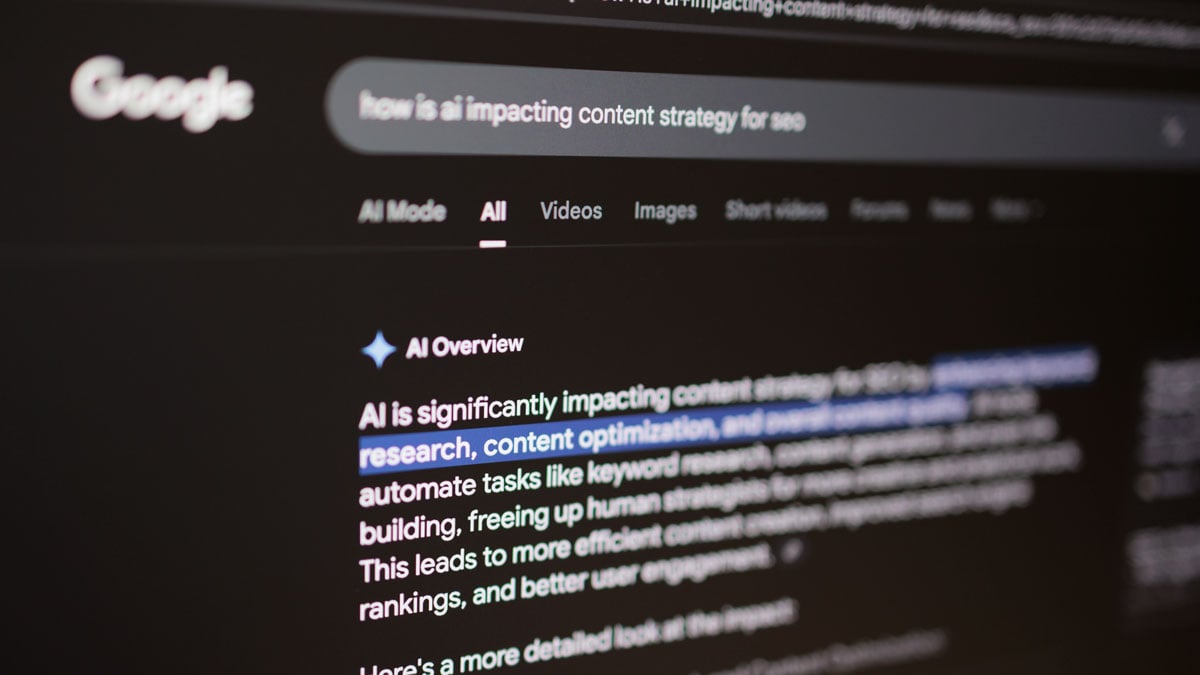5 Marketing Trends on the Radar for 2023

January 10, 2023

Another year, another trend. Marketing has never had a shortage of trends, ranging from live video, artificial intelligence, virtual reality, TikTok challenges, influencer marketing, voice search optimization, big data and more. And while some trends turn into necessary marketing components, others simply fade away. So what strategies will likely move the needle for companies in the coming years?
Based on customer demand and evolving technology, here are trends marketers can expect to grow throughout 2023.
1. Structuring content to answer questions.
Did you know more than half of all Google search queries last year resulted in zero clicks? This means 50% of the time users never clicked through to a website—whether they didn’t believe any of the sites would answer the question or their query was resolved right on the results page.
People want a clear answer fast and often aren’t willing to dig too deep to find it. As a result, Google has increased on-SERP information with featured snippets and “People also ask” dropdowns, so users don’t have to click through to a website to find an answer. More than 60% of search results returned by Google are featured snippets that appear before the organic listings. And competition for that spot on the page is tough.
To improve SERP placement, marketers need to develop an answers-based content strategy to make content easier to discover for search engines and users. A smart way to do this is by creating topical content such as pillar pages and blog posts. By centering internal pages around related topics, search engines like Google are able to better understand the hierarchy of your website and view it as an authority on that topic.
Another strategy to boost SEO is creating an FAQ section on your site. This gives you a chance to incorporate keywords naturally and answer popular questions your users are searching for to ultimately guide them to your solution.
2. Taking a conversational approach.
Conversational marketing has been a popular buzzword and will be heavily invested in throughout the next year. The demand for personalization and humanized interactions has led to many companies adopting chatbots and shifting to less formal communication channels.
Today, B2B companies are leading the charge with 58% using a chatbot on their website, compared to 42% of B2C websites. One of the fastest-growing brand communication channels, chatbot capabilities have improved significantly over the past couple of years. Artificial intelligence has led to many innovative features, including the ability to interpret what customers are looking for, show product or content recommendations, and even adjust tone based on the users’ sentiment and choice of words—all to better engage users while they're perusing a website.
According to Drift, customers prefer the convenience of chatbots when it comes to receiving quick answers to simple questions, accessing service outside of business hours, registering a complaint and resolving a problem. That said, there are still many instances where customers can become easily annoyed with chatbots and prefer to deal with an actual person. It’s critical to evaluate when to use chatbots to supplement your workforce, connecting users with the right people at the right time.
Companies are also seeing the benefits of refreshing copy to reflect a personal and friendly tone—especially in the B2B world where messaging tends to be more formal and technical. Connect with visitors through conversational copy that establishes a connection and fosters engagement throughout all of your digital channels.
3. Leading with brand purpose.
What your brand stands for has an undeniable impact on business in today’s world. It can influence everything from gaining new customers and customer retention to securing partnerships and attracting employees or investors. And it’d be a mistake to think this only applies to consumer companies.
Many B2B companies serve consumer brands, and those brands have high expectations and requirements for their partners and vendors. They consider everything from raw material sourcing and carbon footprint to fair employee wages and diversity and inclusion. A study done by the American Marketing Association found that 55% of B2B customers said a company’s support of social or political causes has influenced purchase decisions. And 38% of B2B buyers said they’d pay over 10% of the average cost to support a socially responsible company.
Labor shortages are another factor driving a greater focus on corporate responsibility. A good brand story can go a long way in attracting employees. Did you know in 2022, 47% of people actively looking for a new job pinpointed company culture as the main reason for wanting to leave? People want to work for a company that aligns with their beliefs, has a diverse and inclusive culture, and is committed to making the world a better place.
Brands need to prove they have a purpose beyond profit. As a result, 89% of marketers plan to invest in social responsibility content in 2023, compared to just 45% in 2022. Through website messaging, social media and other marketing collateral, marketers are finding more ways to incorporate brand purpose stories, such as their mission, vision and values.
4. Telling stories with visuals.
Data shows people prefer visuals over text. In fact, 59% of customers think visual information is more important than textual information when researching a product. And Google returns images for 19% of search queries.
Story-driven content visualization is a great strategy when you have a complex story to tell whether for a brand, product or service. Construct an immersive narrative on your website through interactive elements, images and infographics. Interactive content increases time-on-page while helping you gather valuable insights into what areas users are interested in. If you’re using a chatbot, this also gives you more time to understand a user’s interests based on different touchpoints so you can engage them with relevant messaging.
5. Transitioning to Google Analytics 4.
While this is a fact, not a trend, it’s a big one. Google Analytics 4 (GA4) will be completely replacing Universal Analytics in July 2023—changing the process of how users are tracked across websites and apps. There will also be a different reporting interface, setup and back-end configuration. Marketers need to plan ahead for the technical and strategic implications this will have for their website and digital marketing.
So how is GA4 different and what are the benefits? According to Google, GA4 is a new property with different reports than what you're used to seeing in Universal Analytics properties. Most notably, how metrics are compared is changing. Session-based tracking will be replaced with event-based tracking. That means instead of tracking hit types such as page hits, event hits and social hits, GA4 tracks all interactions as an event, across both your website and app. This makes it a one-stop reporting shop, providing insights into user behavior across channels to help you better understand the customer journey. More measurements are available out of the box as well, so you can start tracking more complex metrics without waiting for developers to set up custom events.
Since Universal Analytics will no longer collect data after July 1, 2023, it’s important to start the migration beforehand so you can become accustomed to the new configuration, interface and reports. Developers can visit the Google Analytics Developer Migration Center for resources that will help guide the transition.
With 2023 just around the corner, we hope these insights help you prepare smart marketing strategies for the year ahead!





